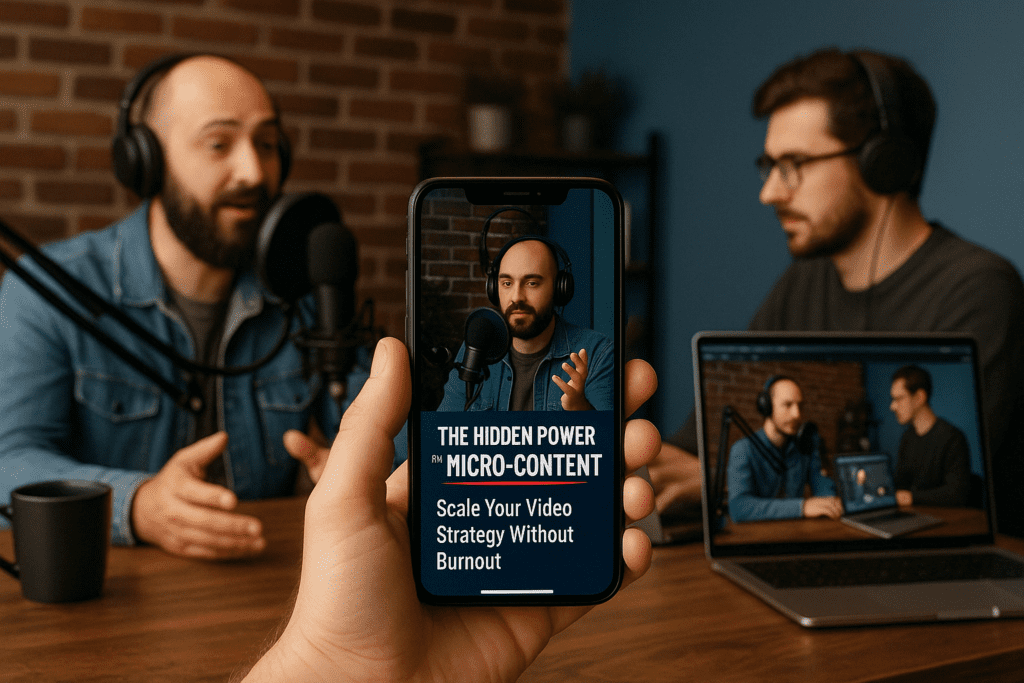
Video marketing is still the most effective format for engagement, trust-building, and conversion in 2025—but many entrepreneurs and small business owners are stuck. They think creating video content requires big budgets, fancy gear, or hours of editing. The truth? You can build a high-impact video strategy by leaning into micro-content: short, snackable clips that are easy to produce, easy to share, and impossible to ignore.
Here’s how to build a scalable video content engine using micro-content that maximizes your time, message, and reach.
1. Start With One Core Video Each Week
Instead of trying to film something new every day, begin with a single “pillar” video that delivers value. This could be a tutorial, thought-leadership piece, podcast episode, or Q&A session.
Action Step: Block 60 minutes weekly to film a 5–10 minute video on a specific topic your audience cares about. Structure it with a clear hook, three value points, and a CTA.
Pro Tip: Record it horizontally for YouTube and repurpose segments for vertical platforms like TikTok and Reels.
2. Chop It Into Multiple Micro-Assets
From that one core video, you can extract 5–10 short-form pieces. These become your content across different platforms throughout the week.
Action Step: Use tools like Descript, Opus Clip, or VEED to auto-generate clips. Highlight moments that include:
- Bold statements
- Tactical advice
- Emotional insights
- Audience questions
Each clip should be 15 to 60 seconds and include captions for silent viewers.
Stat to Know: According to HubSpot, short-form videos have the highest ROI of any social media content type—higher than live video, stories, or long-form.
3. Create Platform-Specific Edits for Maximum Engagement
Each platform has its style and audience expectations. A TikTok audience might love humor and quick cuts, while LinkedIn prefers polished insights and storytelling.
Action Step: Customize micro-content per platform:
- TikTok/Instagram Reels: Fast-paced, bold text overlays, trending sounds
- LinkedIn: More thoughtful, storytelling format with educational tones
- YouTube Shorts: Direct, energetic, CTA-driven
Include platform-native hashtags and upload directly (don’t repost watermarked videos).
4. Schedule and Automate With a Weekly System
Consistency matters more than volume. You don’t need to post every day—just show up regularly with value.
Action Step: Create a weekly content schedule:
- Monday: Full video on YouTube or website
- Tuesday–Friday: 1 micro-clip per day across Instagram, TikTok, and LinkedIn
- Saturday: Recap email or carousel featuring all key insights
Use tools like Metricool, Later, or Buffer to pre-schedule and automate publishing.
5. Turn Engagement Into Funnel Fuel
The goal isn’t just views—it’s conversion. Every piece of micro-content should point to a next step: download a lead magnet, book a discovery call, or join your email list.
Action Step: Include a clear CTA in your caption or video text:
- “DM me ‘START’ and I’ll send the free checklist.”
- “Want more like this? Link in bio for the full guide.”
- “Watch the full breakdown on YouTube.”
Measure which clips generate the most clicks or DMs, and lean into that format moving forward.
Micro-content doesn’t dilute your message—it amplifies it. When you extract the best parts of your core videos and deliver them across multiple touchpoints, you meet your audience where they are, in the format they prefer. It’s a smarter, more sustainable way to do video marketing—especially for busy entrepreneurs building momentum.
Your Move: Film one 10-minute video this week. Break it into five micro-clips. Post one per day. Monitor which post generates the most views, shares, or comments, and focus on replicating that approach. The game isn’t about doing more. It’s about doing it better.


